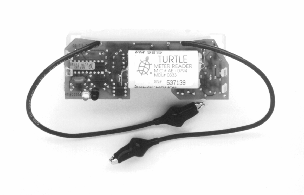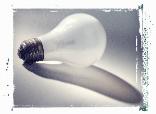Is AMI smart metering? Just a little....
Reading meters is an important part of what we do at Navarro County Electric. The accuracy of meter reads is critical to insure accurate billing each month. Historically electric utilities have manually read meters, but developments in technology are causing changes in the way meters are read today.
Navarro County Electric is taking advantage of technological advances in meter reading to automate the reading process. Using what is called a 'Turtle' meter reading device (so named because the communication frequency in MHz is low, or slow, compared to most current high frequency equipment), we are able to remotely read our members' meters with near 100% accuracy. This device allows us to obtain readings without making a monthly trip to manually read the meter. The readings are delivered to us via our power lines.

Another advantage of remotely read meters is detection of power theft. Utilities utilizing remote reading technology can more easily detect changes in usage patterns which are indicative of energy diversion or theft. In fact, the 'Turtle' devices in use by NCEC can detect and report each time the meter is removed from the socket/meter base (the meter loses voltage when it is removed from the socket). This incidental benefit is good for all members, because energy theft impacts our cost of service.
In addition, AMR helps us to keep our rates as low as possible by eliminating manual meter reading expenses and by allowing us to assign personnel to other areas and duties within our company.
AMI FAQ'S
Our system sends its data over the power lines. There are no radio waves involved in our meter reading. Your reading is
sent over the same lines in which you receive power.
Our system is power line carrier based, there is no way to "hack" the power lines and collect data.
Our AMR meters do not have the capability to do anything but record how much electricity is used, what time it was used
and transmit it back to our office.
We do not share member data with anyone. Only in a criminal investigation might such data be demanded and only a court order would get that information.
No. The AMR meters cannot track or record individual appliance usage. Our meters only record the whole house usage.
Email us at msdept@navarroec.com
 Watts
Watts
The rate of electrical use at any moment is measured in watts.
For example:
- A 50-watt light bulb uses 50 watts.
If a device lists amps instead of watts, then multiply the amps times the voltage to get the watts.
For example:
- 2.5 amps x 120 volts = 300 watts
Watt-hours
To know how much energy you're using you have to consider how long you run your appliances.
When you run a 1-watt appliance for an hour, that's a watt-hour. It's abbreviated Wh.
For example:
- One 100-watt light bulb on for an hour is 100 watt-hours (100 Wh)
- One 100-watt light bulb on for five hours is 500 Wh
Kilowatt-hours
- 1,000 watt-hours is a kilowatt-hour (kWh).
For example:
- One 100-watt light bulb on for an hour, is 0.1 kWh (100/1000)
- One 100-watt light bulb on for ten hours is 1 kWh (1 bulb x 100W x 10h= 1000Wh = 1 kWh)
To understand the difference between kilowatts and kilowatt-hours, kilowatts are the rate of power at any instant. Kilowatt -hours are the amount of energy used. A light bulb doesn't use 60 watts in an hour, it uses 60 watt-hours in an hour.


